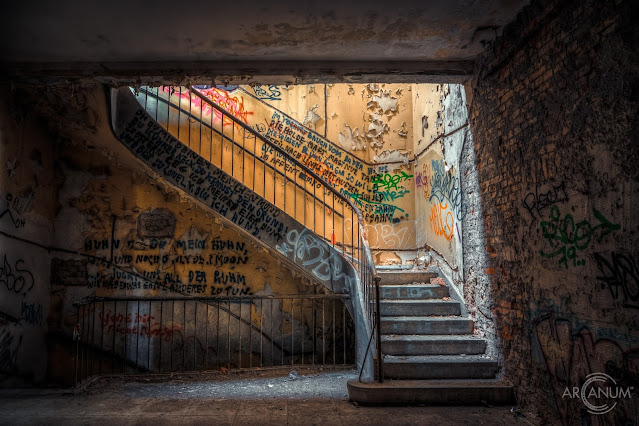It was our 2019 Christmas tour - and what great Christmas presents we received that day!
Together with my mother and mother-in-law, we went on a little day trip to Denmark. I had been given a few tips on very interesting and promising locations that we really wanted to see - but we had no idea what to expect.
The first location we went to was an abandoned farmhouse about 250 kilometers from our hometown. According to the information, there were supposed to be “a few old cars” there.
As is so often the case in Denmark, the house was in the middle of the countryside, so there was no public parking lot nearby. Parking “inconspicuously” a little further away also seemed pointless, as four people with photographic equipment walking along a lonely backcountry road in Denmark on Boxing Day would have been conspicuous in any case.
So we opted for the audacious option and parked directly in the driveway. As soon as we parked, we spotted a sky-blue old Opel Olympia Rekord from the 1950s - so it was a very promising start.
When we turned the corner to get to the two barns, we were in for another surprise: there were several Volvos in various stages of disrepair in the yard - including cars from the PV and Amazon series - as well as a Mercedes Coupe from the W123 series.
But that was by no means the end of the story.
We entered the first of two barns. It was full of Volvos. So full, in fact, that it was almost impossible to move around inside, making it difficult to take photos.
The models were exclusively from the PV and Amazon series - a total of more than ten vehicles, some of which were in surprisingly good condition.
The second barn was even bigger. When we entered it, we were greeted by a huge amount of scrap metal. This was also mostly car parts, but also building materials as well as motorcycles, bicycles and parts thereof.
We also found “several” classic cars in this barn - the highlight was a Mercedes from the 170 series, presumably a 170DS, of which only just under 13,000 were built between 1952 and 1953.
We found another Mercedes from this series, or rather the rest of it, which was barely recognizable as such, a little further back in the barn - next to a BMW 2000CS, an NSU Prinz and other cars. We couldn't even photograph some of the cars as they were buried under too much garbage and material.
In total, we found around 30 classic cars on the property - an incredible collection!
The farmhouse itself was locked and apparently completely empty, so we were able to make our way directly to the next location after enjoying the sight of the rusty beauties once more.
At that second location, more vintage cars were waiting for us...so stay tuned!





































